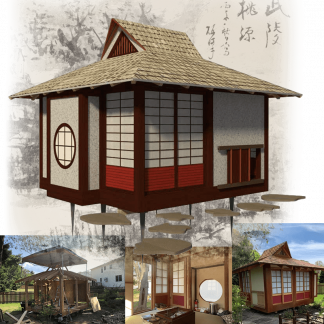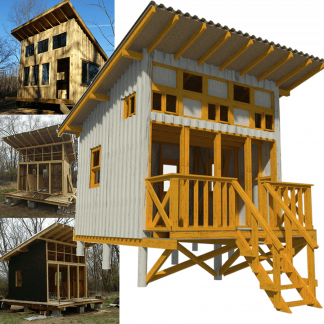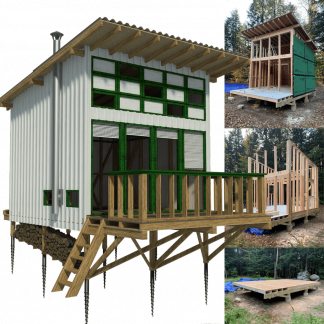
You do not need a full remodel to make a home look more high end. Often, the fastest improvements come from changing a few key light fixtures and habits. This guide walks through simple “do this, not that” lighting swaps that upgrade how a space feels, without changing walls or furniture.
Use these ideas in living rooms, kitchens, bedrooms, and entryways to move from basic and builder grade to more polished and thoughtful.
Swap 1: Centered Dome Light vs Statement Ceiling Fixture
Not that: A small dome or flush mount in the middle of the ceiling trying to light the entire room. It works, but it looks generic and often too bright in one spot and too dim in the corners.
Do this: Choose a ceiling fixture that suits the room size and style, such as a semi flush, flush mount with character, or a chandelier in larger spaces. Add a dimmer so you can adjust the level for different moments. A properly scaled light instantly makes the room feel more considered.
Swap 2: One Harsh Overhead vs Layered Light Sources
Not that: Relying on a single overhead fixture for every task, from cleaning to movie night. This often leads to glare, eye strain, and a flat look.
Do this: Combine three types of light in most main rooms:
- Ceiling light for general brightness.
- Wall lights or sconces to soften shadows and highlight features.
- Table and floor lamps for reading, work, and evening relaxation.
A layered setup feels closer to professionally designed interiors, even with simple furniture.
Swap 3: Random Bulbs vs Consistent Color Temperature
Not that: A cold white bulb in one lamp, a very yellow bulb in another, and something different again in the ceiling fixture. Rooms look mismatched and less refined.
Do this: Choose a single color temperature range for each zone:
- 2700 K to 3000 K for cozy areas like living rooms and bedrooms.
- 3000 K to 3500 K for kitchens, bathrooms, and work areas.
Use matching bulbs in all visible fixtures within that area. Consistent light color pulls everything together and gives a more premium impression.
Swap 4: Bare, Glary Bulbs vs Soft, Diffused Light
Not that: Exposed bulbs that shine directly into your eyes from open fixtures or vanity bars. These can feel temporary and uncomfortable, even in a nicely furnished room.
Do this: Use fixtures with shades, frosted glass, or diffusers that spread light gently. Where you want an exposed bulb look, pick frosted or filament bulbs and position them so they are not at eye level. Softer light across surfaces looks more polished and is easier to live with.
Swap 5: Tiny Fixtures Over Big Furniture vs Proper Scale
Not that: Very small pendants over a long kitchen island, or a narrow chandelier over a large dining table. This makes the room feel off balance and a bit budget conscious.
Do this: Match the scale of fixtures to the furniture:
- Use multiple pendants or a linear light for long islands and tables.
- Choose a chandelier that relates to both the table width and room size.
- In tall foyers, pick fixtures that fill some of the vertical space without overwhelming the room.
Right-sized lighting looks custom even if everything else in the room is simple.
Swap 6: Mixed Metals Everywhere vs Intentional Finishes
Not that: One room with chrome, the next with bronze, the hallway with brass, and the bath with black, all visible in one view. The home starts to feel chaotic instead of unified.
Do this: Choose one main metal finish that supports your hardware and faucets, and optionally one supporting finish. Repeat those same finishes across chandeliers, pendants, and wall lights. This approach looks more curated and upscale without buying the most expensive fixtures.
Swap 7: Plain Entry Light vs Memorable Foyer Fixture
Not that: A tiny flush mount at the front door that looks like it belongs in a closet. The very first impression of the home feels like a default setting.
Do this: Treat the entry like its own mini room. Choose a chandelier, pendant, or semi flush sized for the space that hints at the style of the rest of the home. Even modest upgrades here lift how guests (and potential buyers) feel about everything that follows.
Swap 8: Always-On Full Brightness vs Adjustable Lighting
Not that: One fixed brightness level for all situations. Bright enough to clean often feels too intense for relaxing, and a low watt bulb that works at night is not enough for cooking or projects.
Do this: Use dimmers and smart controls where you can:
- Add dimmers to key ceiling fixtures in living rooms, dining rooms, and bedrooms.
- Use dimmable LED bulbs that are compatible with your dimmer switches.
- Create different light levels for day, evening, and late night.
Adjustable light feels more tailored to your routines, which is a hallmark of higher end homes.
Swap 9: Dark Corners vs Balanced Light Across the Room
Not that: Bright spots directly under fixtures and deep shadows in corners. This uneven look can make even a renovated room feel slightly neglected.
Do this: Walk around your home at night and note where the light stops. Add a lamp, wall light, or slightly stronger bulb wherever corners feel forgotten. Balanced light across the full room footprint keeps the space feeling clean, open, and welcoming.
Swap 10: Treating Lighting As an Afterthought vs Planning It Like Furniture
Not that: Choosing lights last, or only when a bulb burns out, with no plan. The result is usually a mix of styles that never quite come together.
Do this: Think of lighting as part of your main design decisions. When you pick a sofa or dining table, also think through the fixture that will sit above or near it. A simple written list of desired fixtures per room helps you act with purpose instead of reacting to gaps.
Ready To Try Your First Lighting Swap?
You do not need to replace every light in your home at once. Start with one or two of these “do this, not that” swaps in the rooms you use most, and notice how much more finished those spaces feel. Then use the same approach in the rest of the house.
For ideas across chandeliers, pendants, flush mounts, and wall lights that work well in these kinds of upgrades, you can visit the Seus Lighting official website . A few focused lighting choices can quietly shift your home from basic to thoughtfully lit, one swap at a time.








